A complete learner’s guide to Sicilian Defense, one of the most popular chess openings used by most grandmasters and world champions as their first choice when playing Black.
Sicilian Opening is the most popular opening from Black. It has caused a fair share of troubles and victories in some of the most remarkable games in the world.The Sicilian Opening begins with white playing e4 followed by black playing c5 – the Sicilian Defense. The basic idea of c5 is to gain control over the d4 square.
c5 is the most popular response to white’s e4 and is considered to break the symmetry of the board, unlike the e5 opening, which is the second most common response to e4. It is the best scoring response to e4 according to computer analysis. Usually, the blacks c5 pawn is exchanged with white’s d4 pawn.
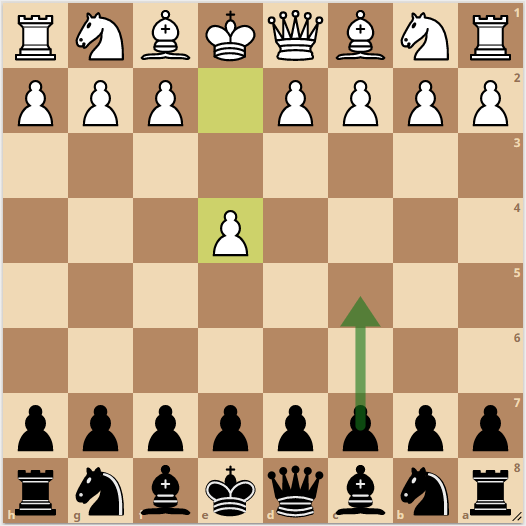
History
Giulio Polerio introduced this opening to the world in his 1594 manuscript on Chess where he did not name it the Sicilian Defense. Initially, the chess players of the world deemed it defensive and far from the best. The first world champion – Wilhelm Steinitz also disliked this opening. Although the opening gained some popularity in the mid-nineteenth century, it lost its charm among players in the twentieth century when the world champion Capablanca said that “Black’s game is full of holes” when playing the Sicilian Defense.
It was in the late twentieth century when aggressive world champions like Bobby Fischer and Garry Kasparov recognised this defense as an opening that provides black the most winning chances. Today, most grandmasters and world champions use this opening as their first choice when playing black.
Statistics
New In Chess stated in its 2000 Yearbook that of all the games in the database:
| Sr. No | Game Details | Numbers and Win-rates |
|---|---|---|
| 1 | Games Played with Sicilian | 145996 |
| 2 | White Win Rate When Black Plays Sicilian | 52.3% |
| 3 | White Win Rate with e4 | 56.1% |
| 4 | White Win Rate with d4 | 54.1% |
| 5 | Black Begins with Sicilian | In 25% of the games in the Chess Informant Database |
Theory
Sicilian is the most complex opening because both sides have a lot of variety, unlike the Italian game with e4-e5 where at some points both players are a bit short of ideas.
From Black’s point of view, it is very flexible because he can choose between many pawn structures if white goes for the main lines with d4. White can try the closed line with Nc3 and g3 or with Nc3,f4, and Bc4 or Bb5. This is the only chance to get some initiative without d4.
He could play 2.c3 to prepare d4 but black has many good moves and he should attack the center and to not allow white to take control there. If white goes for the main lines he can choose where to put the bishops,g5 or e3 and e2 or c4. Apart from it, if he is to attack with the pawns later either he has to go for f3,g4,h4 setup or for f4 snf to seek e5 or f5 break.
Black has plenty of options. If he wants to get a more solid game he can go to the setups with d6 and e5, where the game is more closed. If he prefers a more sharp game and is ready to take the risk to allow white to attack him, then he can go for Dragon or Najdorf with e6. Sozin’s attack was the favorite line of Boby Fischer.
1. Open Sicilian
- e4 c5
- Nf3 d6
- d4 cxd4
- Nxd4 Nf6
- Nc3 a6
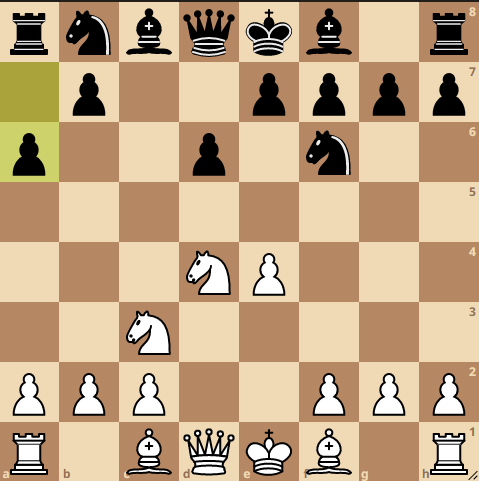
2. Closed Sicilian
- e4 c5
- Nc3 Nc6
- g3 g6
- Bg2 Bg7
- d3 d6
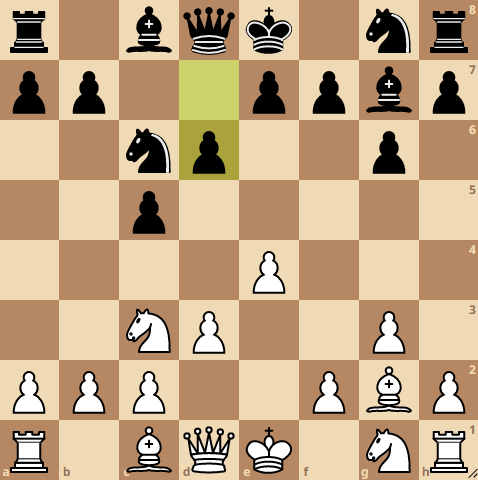
3. Alapin Variation
- e4 c5
- c3 Nf6
- e5 Nd5
- d4 cxd4
- Nf3 Nc6
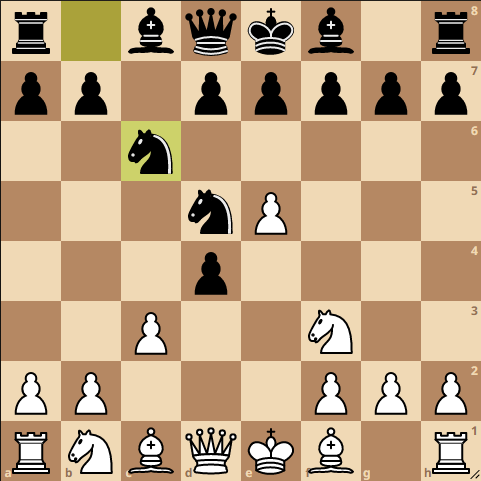
Principles
- The main principle of the defense is to claim the center and to deny White’s occupancy of the e4 and d4 squares.
- Black’s c pawn is usually exchanged to open the c file to allow the Rook to come on the semi-open c file and to allow the Queen to come out to pose an attack on the Queenside.
- White tends to gain an advantage on the kingside while Black gains an advantage on the Queenside.
Variations of The Sicilian Defense
Open Sicilian (Main Line)
75% of the games beginning with e4,c5 are followed with white playing Nf3, after which black has three main choices- d6, Nc6 and e6. If white responds with d4, then all the lines that continue after are known as ‘Open Sicilian’. Black then trades the c5 pawn and d4 pawn to get central advantage and gains an open ‘c’ file. After white plays Nxd4, black can branch out into the following variations:
- Classical
- Dragon
- Najdorf
- Scheveningen
Classical Variation
- e4 c5
- Nf3 d6
- d4 cxd4
- Nxd4 Nf6
- Nc3 Nc6
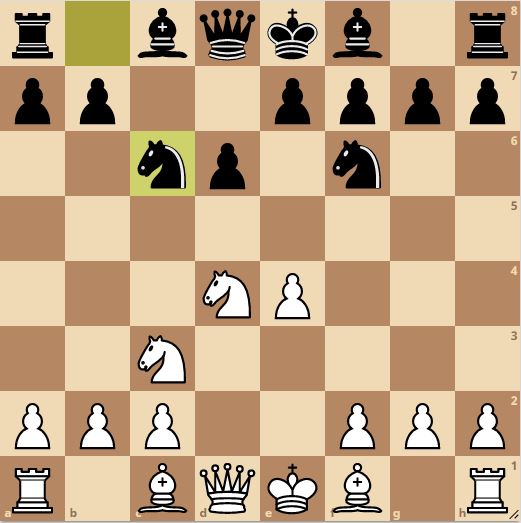
In this variation, black goes with d6, after which there is a trade of the d4 pawn followed by knight playing Nf6 and then Nc6. This variation puts maximum pressure on white’s center.
White’s common responses are Bg5 called the Richter-Rauzer Attack, and Bc4, the Sozin variation. Black usually responds with e6 to prevent double pawns on the kingside in the former and to limit the c4 bishop’s range, and e5, the Boleslavsky system, the most typical setup, in the latter.
Following this, black has a wide range of moves, both developmental and tactical, and can safeguard his king by developing his kingside bishop followed by castling.
White’s Responses
Bg5 is the most common move against the Classical variation that threatens double pawns if the Bishop takes the knight on f6 and also stops Black from fianchettoing Black’s dark-squared Bishop. Further White can advance the ‘f’ pawn to gain space on the kingside.
Dragon: The Most Popular Line
- e4 c5
- Nf3 d6
- d4 cxd4
- Nxd4 Nf6
- Nc3 g6
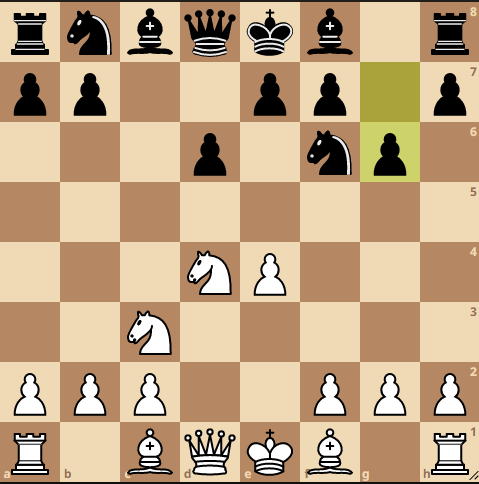
This variation was named by Fyodor Dus-Chotimirsky in 1901 because he saw a resemblance between the positioning of the pawns and the Draco constellation.
Here, after the trade of the d4 pawns, black plays Nf6, followed by white’s Nc3 to which black plays g6. The primary point of the g6 move is to fianchetto the black bishop on h8-a1 diagonal in the next move. Fianchetto means to develop a bishop by placing it at a square where it controls a long diagonal of the board.
In this variation, the opponents castle on opposite sides with white castling on the queenside and black castling on the kingside. The game then leads to a ferocious battle where white tries to break black’s dragon by playing the ‘Yugoslav attack.’ Although this variation is one of the sharpest chess openings, one can play, it has often been called unplayable due to the vast complications that can arise.
World champion Garry Kasparov played this opening twice to defeat Vishwanathan Anand in their World Championship matches in 1995.
White’s Responses
Black’s g7 Bishop is extremely powerful in the Dragon variation, hence a great way to combat this variation is to try to exchange this G7 Bishop by playing Be3 followed by Qd2 and then Bh6. Since Black has castled Kingside, launching a Kingside attack would be beneficial for White by playing moves like f4 and g4. Controlling the d5 square is also essential for White as Black may try to get the d6 pawn to the d5 square to gain central control.
Najdorf Variation
- e4 c5
- Nf3 d6
- d4 cxd4
- Nxd4 Nf6
- Nc3 a6
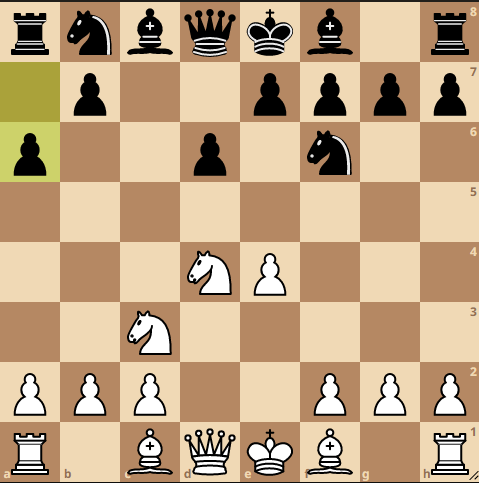
This is black’s most famous variation in the Sicilian Defense.
After the trade of the d4 pawns and Nf6 and Nc3, black plays – a6, Najdorf. a6 prevents white from giving a check by playing Bb5+ and also prevents the knights from coming to the b5 square. Black is now preparing to play b5 in his next move to focus on a more queenside play. Playing a6 first instead of e5 temporarily prevents white’s g4’s thrust.
Black’s most popular response to a6 is Be3 which is known as the English Attack. White is further planning on playing f3, Qd2 and then long side castling. If white plays G4 immediately after Be3, it is known as the Hungarian Attack. Black usually responds by playing moves like e6,e5 or Ng4.
The mainline is Bg5 in response to a6 followed by black playing e6.
White’s Responses
White usually plays Be3 as the 6th move here to introduce a line called the English Attack. White’s plan to f3, Qd2 and then pose a kingside attack. White can also play Bg5 on the 6th move to prevent Black from playing e5 immediately.
Scheveningen
- e4 c5
- Nf3 d6
- d4 cxd4
- Nxd4 Nf6
- Nc3 e6
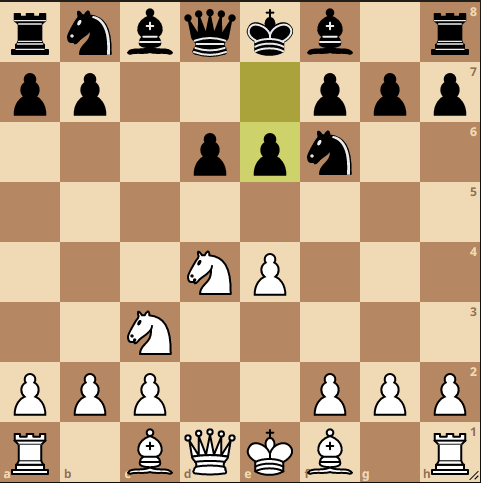
Here, after trading the d4 pawns and developing the knights, black plays e6 covering a small center. To this, white can play g4, called the Keres attack, further threatening g5 to attack the knight.
The most common move played in response to this h6 to prevent g5, however even after this move, black has gained a fair amount of kingside space, and the idea of kingside castling may seem discouraging to black. Following h6 white can either play Be2 or Bg2. Another typical response to white’s g4 is also a6.
Black can hold the balance under the Keres attack, but a lot of players avoid this by playing a6 first before e6.
White’s Responses
Playing f4 will help White gain control of the central squares since Black has a central majority. White’s typical response in this variation is to launch a kingside threat. White also must stop Black from playing d5 to gain further control of the center.
Less Common Variations
Sveshnikov Variation
- e4 c5
- Nf3 Nc6
- d4 cxd4
- Nxd4 Nf6
- Nc3 e5
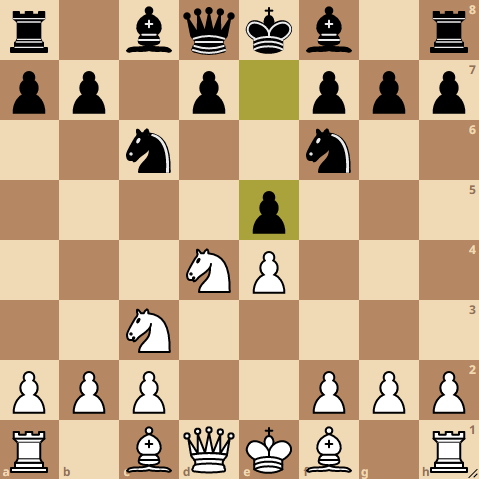
There is a very high probability of Black gaining its fair share of the center in this line as compared to many other lines under the Sicilian Defense. Black gains a central pawn majority which can be further improved by Black playing d5. This variation usually leads to an imbalanced middle game in almost every game.
White’s Responses
White usually plays Nb5 on the 6th move to exploit the d6 square. White usually follows this by playing Bg5 and White’s main target is to exploit the d5 square. If White captures the Knight on f6 with its Bishop on g5, White is threatening Nd5 as the next move. Further, Bxf6 also doubles the pawns on the f file. White then plays moves like c3 to deprive the Black knight of the d4 square.
Kalashnikov Variation
The Kalashnikov Variation is a close relative of the Sveshnikov Variation and is sometimes known as the Neo-Sveshnikov.
- e4 c5
- Nf3 Nc6
- d4 cxd4
- Nxd4 e5
- Nb5 a6
- Nd6+ Bxd6
- Qxd6 Qf6
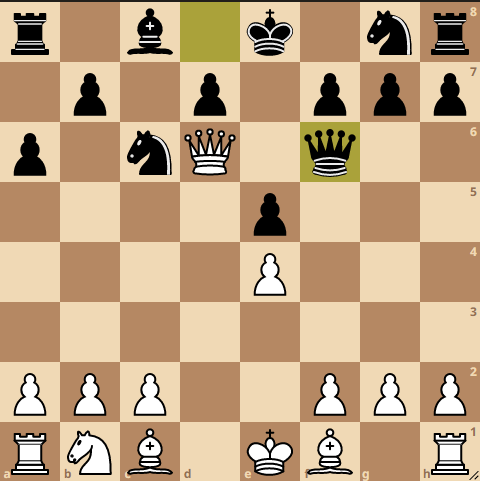
Here, Black gives up two Bishops to gain a lead in development. This variation is not very popular as it has been studied that White has an advantage in this variation. The idea of this line is similar to Sveshnikov where Black has a backward pawn on the d6 square and has a weak d5 square. However, the difference between the two variations is that here Black has not developed the knight to f6 and White has brought the knight to c3.
Kan Sicilian (Paulsen Variation)
The Paulsen Sicilian, also known as Kan variation, is one of the most practical options for Black against 1.e4. A perfect blend of the Scheveningen, Taimanov and Hedgehog variations that allows you to play an attacking game without many forced lines. Many strong grandmasters have played it regularly and achieved great success with it like- Lajos Portisch, Ilya Smirin, Vadim Milov. World Champions like Magnus Carlsen and Kramnik have played it successfully as well.
- e4 c5
- Nf3 e6
- d4 cxd4
- Nd4 a6
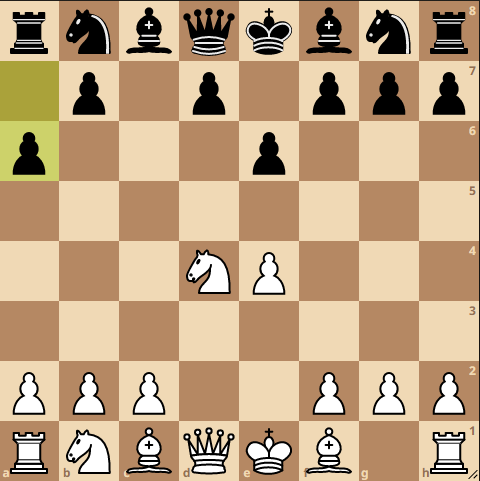
Post this, White has three main moves – c4, Bd3 and Nc3. Nc3 offers the widest range of moves as the game progresses.
Four Knights Variation
- e4 c5
- Nf3 e6
- d4 cxd4
- Nxd4 Nf6
- Nc3 Nc6

Here, Black immediately puts pressure on the central squares and further build this pressure by playing Bb4. This variation is a solid choice for Black as it is a very active line that limits White’s choices to move. This is also one of the easiest lines of the Sicilian to learn as it does not consist of the complicated pawn structure that the popular variations of the Sicilian Defense consist of, making this line easy for Beginners to learn.
White’s Responses
White’s main moves on the 6th move Ndb5 or Nxc6 in order to gain spatial advantage on the board.
Four Knights Variation
- e4 c5
- Nf3 e6
- d4 cxd4
- Nxd4 Nf6
- Nc3 Bb4
- e5 Nd5
- Nb5 a6
- a3 Bxc3
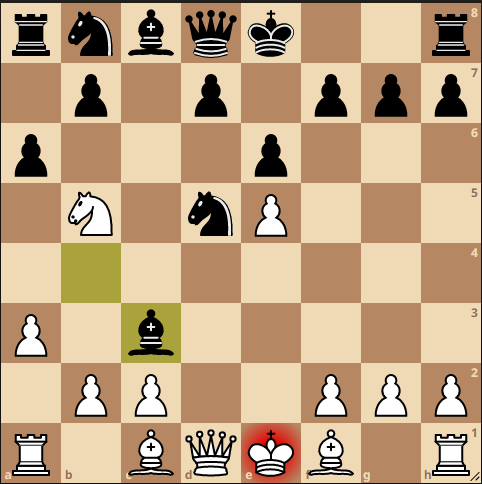
White’s Response to the Sicilian Defense
Although the Sicilian Defense has proven to be the most popular and strongest response to White’s e4, it is believed to be a double-edged sword. Black may suffer favorable or unfavorable consequences. Hence, we are going to discuss White’s responses to the Sicilian Defense.
Alapin Variation
Here white’s response to c5 is c3.
This opening allows white to avoid trading a central ‘d ‘ pawn for black’s ‘ c ‘ pawn. Semyon Alapin exhaustively played this opening, and hence the name was coined. Today, Sergei Tiviakov is one of the Grand Masters that is often seen playing this opening.
After c3 white aims to play d4 to control the center, hence black plays either d5 or Nf6 to try to maintain control. The Nf6 variation would resemble Alekhine’s Defense if white plays e5 followed by black playing Nd5. In the Nf6 variation, black immediately attacks White’s e4 pawn.
Nf6 Variation
- e4 c5
- c3 Nf6
- e5 Nd5
- d4 cXd4
- cXd4 d6
- Nf3 Nc6

White can now play Bc4 and gain a spatial advantage.
Another Alapin variation is if Black plays d5 instead of Nf6. Here, white usually end up with an isolated d pawn after the queens are exchanged, however white is left with more space.
d5 Variation
- e4 c5
- c3 d5
- exd5 Qxd5
- d4 Nc6
- Nf3 Bg4
- Be2 cxd4
- cxd4 e6
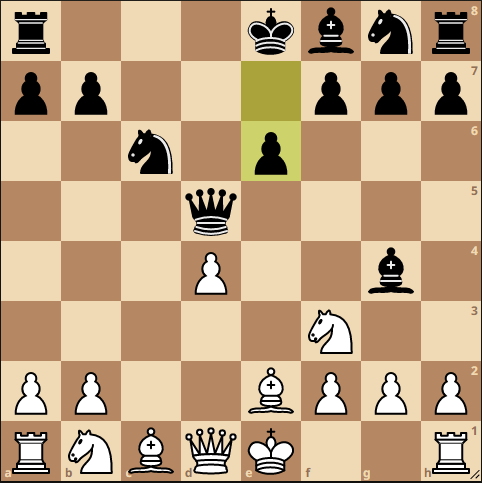
Black’s strategy now is to play Bb4 and develop his king side. This variation also transposes into the Advanced French Defense. Alapin is usually played to divert Black from the main lines of Sicilian and to force Black to adapt to White’s plan for controlling the center.
Grand Prix Attack
- e4 c5
- Nc3 Nc6
- f4

Instead of playing d4, White tries to convert the spatial advantage into a king side attack. White intends to play Nf3 followed by Bb5 or Bc4 to castle king side soon into the game and plan the further attack.
If White plays Bb5, attacking the Knight on Nc6, it is Black’s decision to either allow the double pawns by doing bxc6 or to prevent the trade between the bishop and the knight. If Black chooses to allow the double pawns, then Black’s queen side expansion with a6 will not be possible.
Black usually avoids the trade and plays a popular move – Nd5.
White can also play Bc4 placing the bishop on a strategically good square keeping an eye on the f7 pawn and hoping to play f5 at some point in the game. Unfortunately, black can exploit this situation to develop pieces by playing moves like b5 to attack the bishop on c4.
Black can even play e6, blocking the c4 bishop from controlling the f7 diagonal. White’s king may seem open here, but White has a decent amount of control over the center.
Smith-Morra Gambit
This is an extremely aggressive response to the Sicilian defense.
Morra Gambit Accepted
- e4 c5
- d4 cXd4
- c3 dXc3
- NXc3 Nc6
- Nf3 d6
- Bc4 Nf6
- e5 dXe5
- QXd8 NXd8
- Nb5
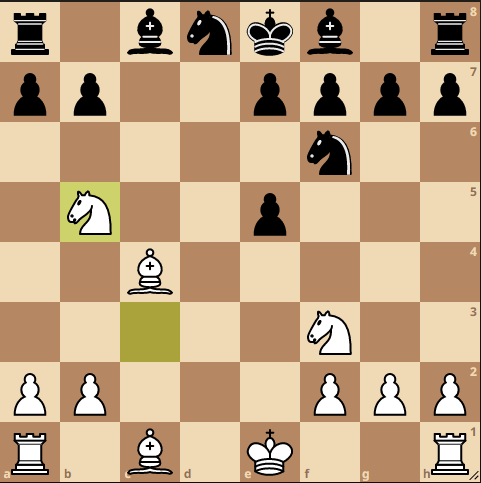
Morra Gambit Declined
- e4 c5
- d4 cXd4
- c3 Nf6
- e5 Nd5
- cxd4

This usually leads to one of the main variations of Alapin. White now has a spatial advantage, and Black isn’t even up by a pawn. Morra Gambit can prove to be dangerous, especially if Black is unprepared for this opening. Even if Black can tackle this opening, black has the capacity to gain. an extremely pressurizing position.
Closed Sicilian
Nc3 is a common response to Sicilian as well. Usually, Black responds in a similar way like that to Nf3. Black usually avoids playing a6 or g6 after Nc3. White can follow Nc3 with Nf3, and other possible moves are g3,f4 and Nge2. Many lines of the Closed Sicilian can transpose into Open Sicilian.
Closed Sicilian is not as challenging for Black as Black has various responses to Nc3.
- e4 c5
- Nc3 Nc6
- g3 g6
- Bg2 Bg7
- d3 d6
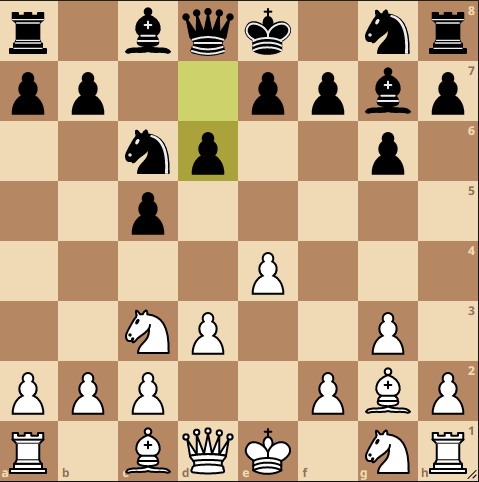
White can follow this with Be2, Qd2 and castling.
Sicilian Defense Traps
1. Fischer Trap
- e4 c5
- Nf3 Nc6
- d4 cxd4
- Nxd4 g6
- Nc3 Bg7
- Be3 Nf6
- Bc4 o-o
- Bb3 Na5
- e5 Ne8
- Bxf7 Rxf7
- Ne6
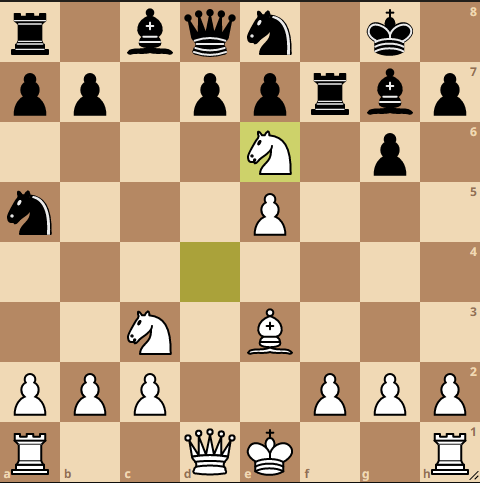
The Queen is trapped, making White material up.
2. Wing Gambit
- e4 c5
- b4 cxb4
- a3 d5
- exd5 Qxd5
- axb4 Qe5+
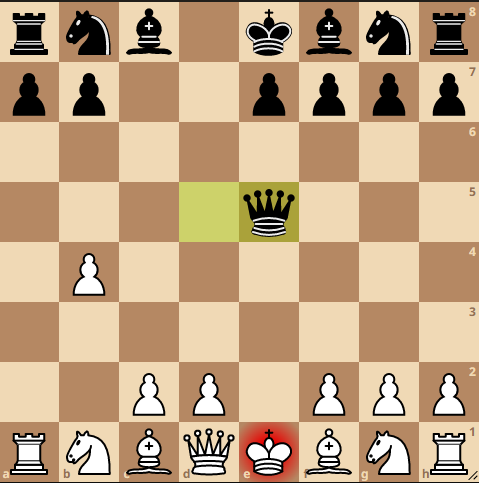
Black wins a Rook.
3. Magnus Smith Trap
- e4 c5
- Nf3 d6
- d4 cxd4
- Nxd4 Nc6
- Nc3 Nf6
- Bc4 g6
- Nxc6 bxc6
- e5 Nd7
- exd6 exd6
- 0-0 Ne5
- Re1 Be7
- Rxe5 dxe5
- Qf3 0-0
- Bh6

White’s Responses
Most players believe that White has to play a sharp line against the Sicilian as Black ends up having a better structural position in the end game, in most cases where Black begins the game with the Sicilian Defense. Hence, White tries to pose a strong attack in the Opening itself. However, White does not always have to use this strategy but can go in for a positional set up throughout the game.
Weakness of the Sicilian Defense
As compared to e5, moving the c pawn in the Sicilian Defense restricts the minor pieces to develop for Black. Pieces develop majorly on the Queenside and not on the kingside. The Queen also develops later into the game.
How to Prepare
The following study links and video links will be helpful to prepare to play this defense:
Famous Players that Played the Sicilian Defense
The complex opening was shunned by many grandmasters till it regained its fortunes in the mid 20th century when leading players such as Isaac Boleslavsky, Alexander Kotov, and Miguel Najdorf began indulging in the opening once again.
Players like Leonid Stein, Mark Taimanov, and Mikhail Tal practised this opening and played it in multiple games. It was through the efforts fo World Champions – Bobby Fischer and Garry Kasparov, that this opening was popularised and began to be recognised as the best response to White’s e4.
Famous Games
Books to Refer to:
- Starting Out: The Sicilian (starting Out – Everyman Chess) – Emms, John
- Beating The Anti-sicilians: Grandmaster Repertoire 6a – Kotronias, Vassilios
- The Dragon 2 – Jones, Gawain
- The Najdorf In Black And White – Smith, Bryan
- Sicilian Scheveningen: Move By Move – D’costa, Lorin
FAQ
1. Why play the Sicilian Defense?
The Sicilian Defense is the best response to White’s e4, giving Black the highest advantage possible during the opening itself. This advantage can be used to gain the center and in most cases pose a Queenside attack, allowing Black to be in an attacking position. Although the opening does have loop holes, it is extremely strategic and makes every match extremely interesting to play and spectate.
2. What to do after c5?
This is a common question that arises among most Sicilian enthusiasts. Some look for the safest or the best variations to follow the initial c5. However, there is no safest or best variation. It all depends on the player’s skillset and the type of game the player would go for. The multiple variations, as mentioned above, take the game into very diverse lines, with some being very aggressive and sharp, while some being closed.
3. Is the Sicilian Defense a good option for beginners?
The diversity and the sharpness of the line might make it hard for Beginners to exploit the loopholes created for White and simultaneously defend the loopholes that Black may create. Thus, since a rather strategic gameplay is required, some experience and study in the game would be a good idea before jumping into this opening.
4. Why is it called the Sicilian Defense?
In 1813, English Master Jacob Henry Sarratt standardised his English translation of the name of this opening as ‘the Sicilian Defense’, referring to an old Italian manuscript that used the phrase il gioco siciliano (‘the Sicilian game’).
5. Which Sicilian Defense is the best?
The Open Sicilian is considered the Best line of the Sicilian Defense since 80% of all examples of the Defense begin with the Open Sicilian. It is also a good opening for tactical play and development of pieces strategically in the opening.
Conclusion
Although this opening is strategically rich, it is highly complex. There are at least a dozen sub-variations under the open Sicilian; however, these are the most commonly played and popular variations. This immensely strong opening is not a beginners play. Still, if you are interested in playing an exciting, aggressive game with dozens of possibilities and complications, this one is for you. A lot of strong players have a love-hate relationship with this opening, but the spectrum of options makes the sharpest minds the most curious.
Learn Chess. Learn Life Lessons.
Leran Chess from the GrandMasters.
Help your child improve their Strategic Thinking, Critical Thinking, Time Management, etc. through the game of Chess.

This article is technically edited and reviewed by Grand Master Marian Petrov.

CHESS KLUB offers chess classes for kids and adults of all levels. Our coaches include FIDE, National, International and Grand Masters among many.
We offer Online and Classroom coaching.
CHESS KLUB has coaching centers in the US and India now!
More on Sicilian Defense
More Chess Openings
Learn Chess from the Masters
Do you want to see your kid excel in Chess?




